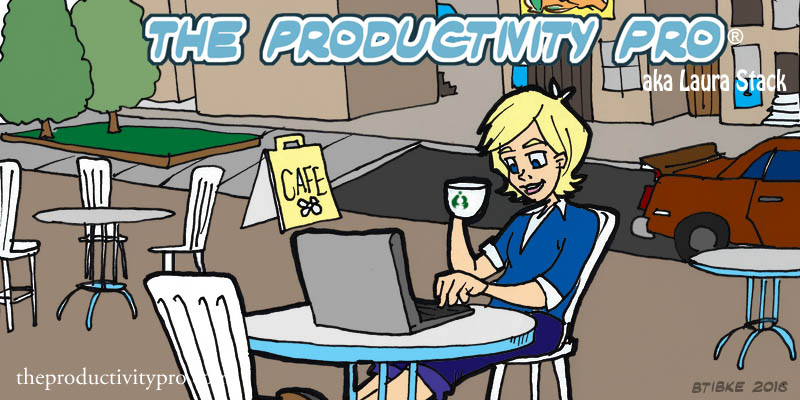“38 percent of workers in management, business, and financial operations occupations, and 35 percent of those employed in professional and related occupations, did some or all of their work from home on days they worked.“—2015 American Time Use Survey, U.S. Bureau of Labor Statistics

Recently, I’ve written quite a bit about the trend toward workplace decentralization, which I expect to accelerate in the future. Interestingly, that’s also the trend most publicized by the authors of the 2015 American Time Use Survey in their June 2016 press release.
In 2015, the U.S. Bureau of Labor Statistics interviewed 10,900 Americans from all walks of life for the American Time Use Survey. ( <-- Click to Tweet.) Since 2003, the BLS has released the results of the previous year’s survey late the following June. In its 14-year history, ATUS has chronicled a trend toward longer work hours, on weekdays and weekends both, as well as our changing patterns of sleep, leisure time, child and elder care, and more.
In 2016, the authors made a point of emphasizing the increasing tendency of Americans to work at home, especially those of us in management, business, and professional occupations. Overall, 24% of all workers worked at home at least part of the day—up from 23% in 2013 and 2014—to the tune of 3.2 hours on average. This percentage has risen steadily from 19% in 2003. Overall, 39% of workers over 25 with college educations worked from home on a given day, in contrast to only 7% of those with less than a high school diploma. This disparity likely reflects the fact that older workers with better educations tend to telecommute or be self-employed more often than their less-educated counterparts.
Now, remember: the survey includes a random sample of ALL Americans over 15, and is therefore skewed somewhat, since it includes teens still in high school, as well as retired and disabled individuals. It also includes all days of the year, including weekends, holidays, vacations, and sick days. All this taken into account, it appears we took it a shade easier in 2015, possibly because the workforce grew by almost 3.2 million (156,867,000 as opposed to 2014’s 153,681,000 workers). The national daily average of hours worked dropped from 3.25 to 3.19 hours, while the average workday of those who actually worked was 7.57 hours, down from an adjusted 7.73 for 2014.
The average hours per workday breaks down to 8.06 hours for full-time workers and 5.3 hours for part-time workers (down from 8.18 and 5.31, respectively). When reduced to weekdays versus weekends/holidays, the average jumped to 7.95 hours for weekdays, with full-time workers contributing an average of 8.46 and part-time workers an average of 5.29; 2014’s numbers were 8.56 and 5.80, so that’s a significant drop. As before, work-related activities—commuting, preparing for work, and the like—added up to 50-60 minutes to each worker’s day.
It’s clear that the economy expanded again in 2015, with 106,765,000 people working on an average day; that compares with 105,658,000 in 2014, an increase of over a million. While just half of 2014’s growth, it’s still growth, probably due to the unemployed finding work and young adults entering the workforce for the first time.
Other factors of time use haven’t changed much. Workers over age 18 slept about 8.42 hours daily, as opposed 8.44 in 2014. The unemployed slept more, at 9.27 hours. Again, the unemployed spent almost twice as much time as the employed on housework, at 2.94 vs. 1.54 hours per day—an increase from 2.71 vs. 1.53 hours in 2014.
Leisure time continues to drop slightly. For workers, the time spent on leisure activities was 3.68 hours in 2014, as compared to 2015’s 3.62 hours. TV-watching stayed about the same at 1.83 hours vs. 1.85. Meanwhile, unemployed persons averaged 5.39 hours of leisure, slightly up from 2014’s total of 5.30, with a commensurate rise to 2.95 hours of TV from 2.82 in 2014.
Handle with Care!
The ATUS data can be confusing when not carefully reviewed; in the past, commentators have expressed their horror upon noting that the average American works less than four hours on the average day, failing to take into account the wide range of people surveyed, not to mention weekends and holidays, when work time is often zero. While useful, the individual data tables remain confusing.
It’s interesting to note, though, that we’re still inching toward decentralization, even though work hours decreased slightly as the workforce expanded. It’s dangerous to make sweeping statements, but given the slowing growth, we may be headed for another economic slowdown if hours worked continue to decrease. On the other hand, overworked Americans have long needed some relief; and if we’re working slightly less per day, at least more of us have jobs.
© 2016 Laura Stack. Laura Stack, MBA, CSP, CPAE is an award-winning keynote speaker, bestselling author, and noted authority on employee and team productivity. She is the president of The Productivity Pro, Inc., a company dedicated to helping leaders increase workplace performance in high-stress environments. Stack has authored seven books, including Doing the Right Things Right: How the Effective Executive Spends Time (January 18, 2016). She is a past president of the National Speakers Association, and in 2015 was inducted into its exclusive Speaker Hall of Fame (with fewer than 175 members worldwide). Stack’s clients include Cisco Systems, Wal-Mart, and Bank of America, and she has been featured on the CBS Early Show and CNN, and in the New York Times. To have Laura Stack speak at your next event, call 303-471-7401 or visit her website.


